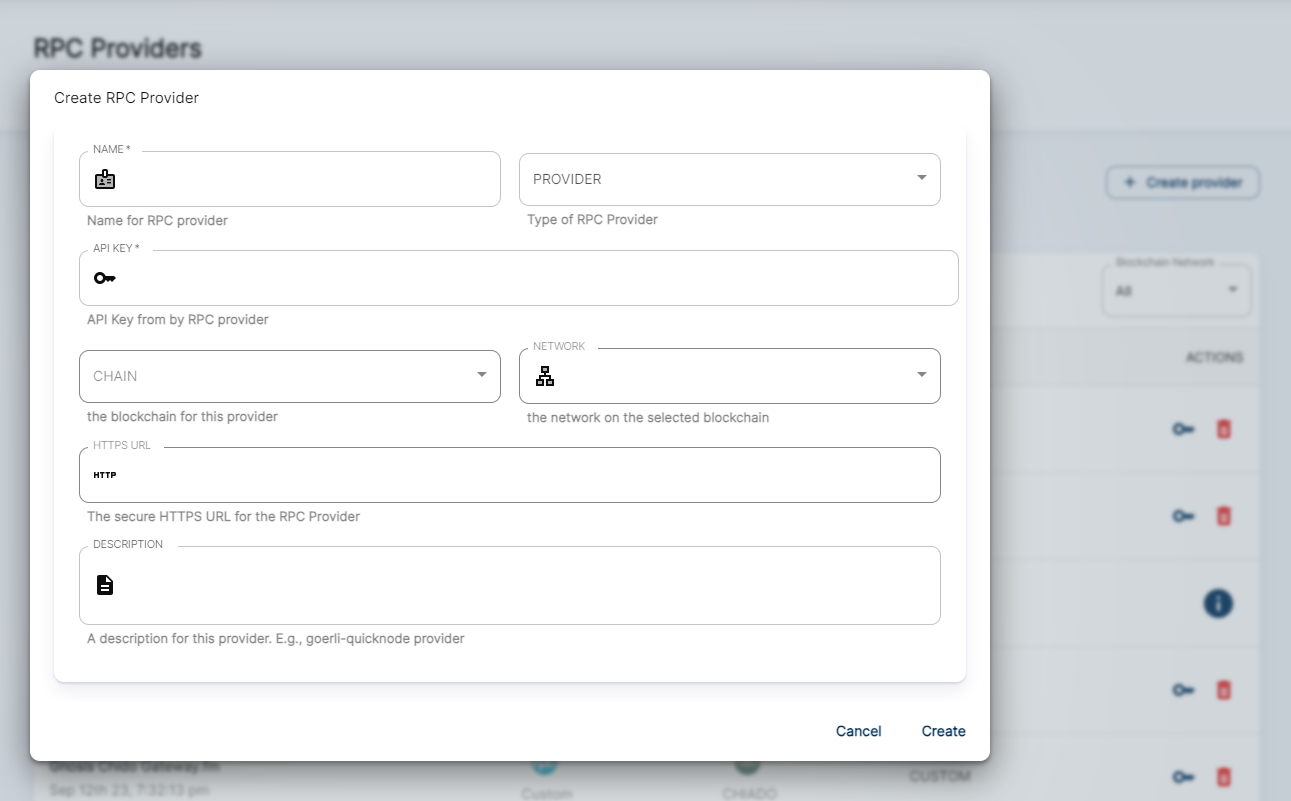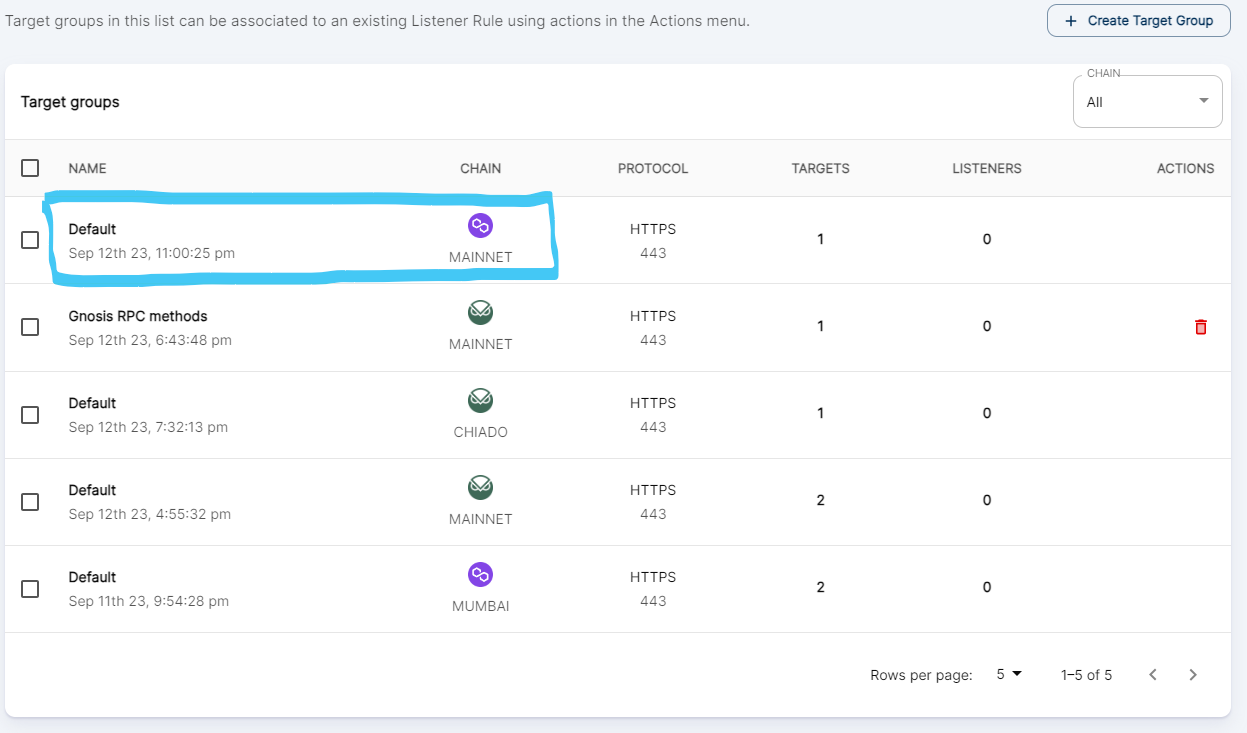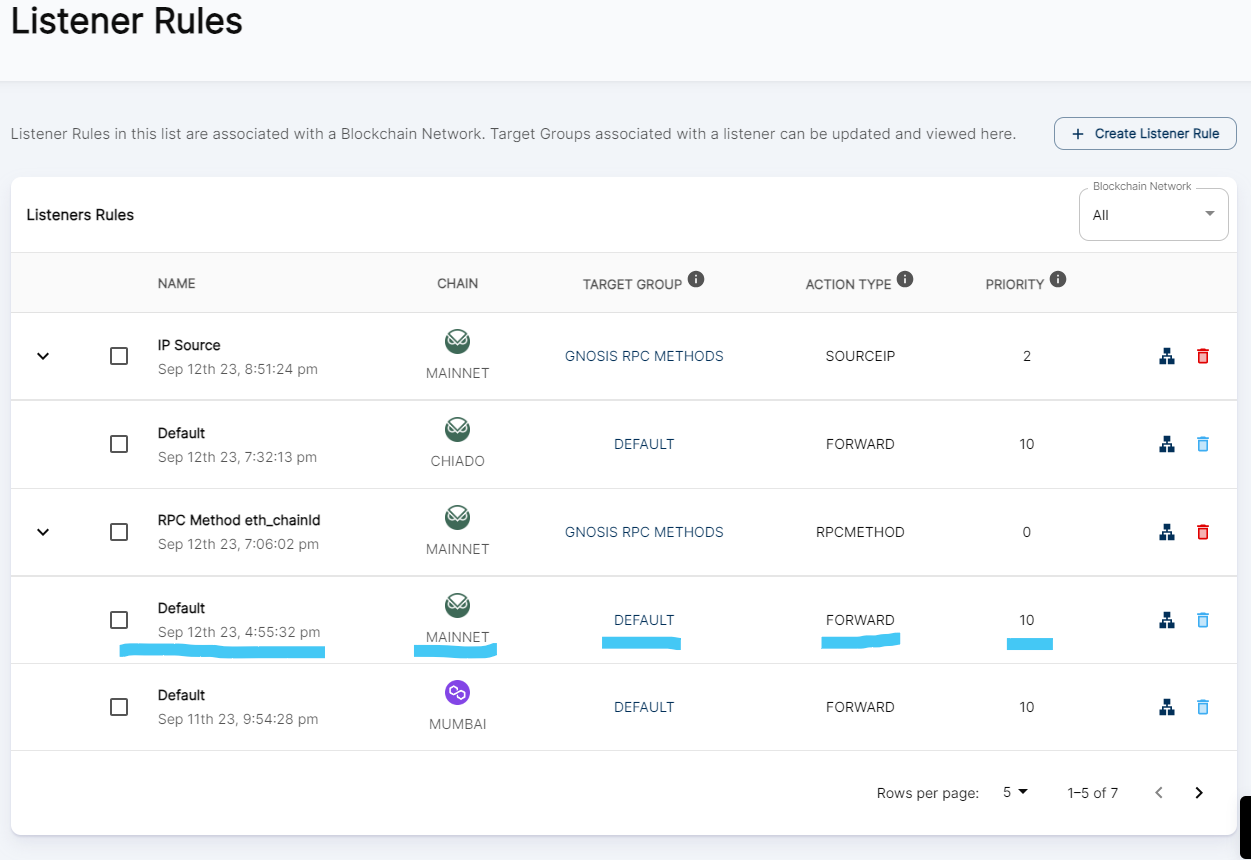RPC Providers
Add additional RPC Node Providers for your RPC Request to be distributed across.
When your account is provisioned with endpoints, Backpac creates a Default Target Group and Listener Rule for the Blockchain Networks your endpoints support. An application with an API Key is created to access each blockchain network. Additionally, it is recommended you add other RPC Node Providers that support the same Blockchain Network and add them as Targets to a Target Group.
RPC Provider Fields
Before we dive in, let's get acquainted with the essential RPC Provider Fields you'll need to fill out:
Name:A unique identifying name for the RPC Node provider you are adding.Provider Type:The type of provider. Options include:- Alchemy: The HTTPS URL will be completed for you upon selecting a Blockchain and Network.
- Infura: The HTTPS URL will be completed for you upon selecting a Blockchain and Network.
- Custom: The HTTPS URL will be required.
API Key:Required for all provider types except Custom.Blockchain:The Blockchain you wish to connect to.Network:The Network on the chosen Blockchain you wish to connect to.HTTPS URL:The URL for the RPC Node Provider (required for platform-based provider types).Description:A description or memo for the RPC Node Provider.
Field Requirements
- Fields marked with
*are required. - Fields marked with
**are conditionally required.
Create RPC Provider Dialog

This dialog makes it easy to add RPC Node Providers to ensure the efficient distribution of your RPC requests.
Add RPC Provider
For QuickNode users, the system automatically creates a Default Listener Rule, Target Group, and Application with an API key for accessing the Blockchain Network when your account is provisioned with an endpoint.
Adding an RPC provider creates a default Listener Rule and Target Group. This process begins when you add one or more RPC providers to your account. It gets you ready to go in just one step.
Steps to Add an RPC Provider
- Enter a
Namefor the provider. - Select a
Provider Type(Alchemy, Infura, or Custom). - Enter the
API Keyprovided by the provider. For Custom provider types, this field isn't required. - Select a
BlockchainandNetworkto connect to. - If this is a custom provider type, provide the
HTTPS URLfrom the provider. - Add a
Descriptionor memo for the RPC Node Provider.
Default Target Group
When you add an RPC provider, our system generates a Default Target Group and Listener Rule tailored to the Blockchain and Network serviced by that provider.
You can add additional providers to this Target Group or create custom target groups as needed. Furthermore, you can create custom listener rules with filtering options based on RPC Method, Source IP, or HTTP headers.
Default RPC Provider Target Group
Name:A Target Group with the name Default will be created. This name cannot be changed and is system reserved.Blockchain:The Target Group houses target nodes for the Blockchain for the provider you specified.Network:The Target Group houses target nodes for the Blockchain Network for the provider you specified.Targets:Initially contains your QuickNode endpoint as a target. This can be modified manually, but the QuickNode endpoint cannot be removed from the Default Target Group.Listeners:The Target Group initially has a Default Listener Rule assigned to it.

Our RPC Node Provider management system simplifies the process of adding and configuring RPC providers, ensuring you're ready to go with just a few straightforward steps.
Add RPC Provider as a Target
You'll now need to add the new RPC Provider to a Target Group.
Default Listener Rule
Default Blockchain Network Listener Rule
Name:A rule named Default will be created. This name cannot be changed and is system reserved.Blockchain:The rule will listen to traffic for the Blockchain you specified.Network:The rule will listen to traffic for the Blockchain Network you specified.Target Group:The rule will initially attach to the Default Target Group created. This can be changed manually.
